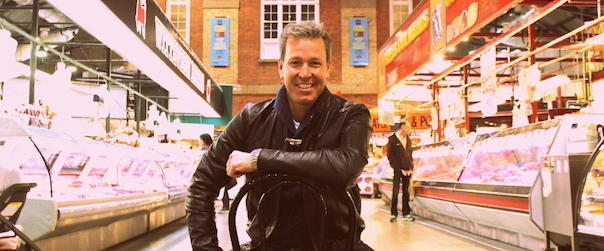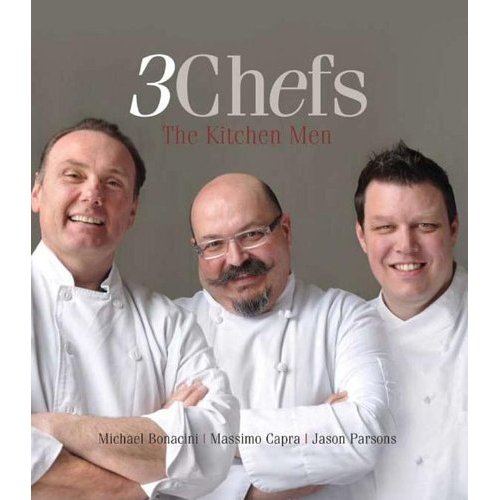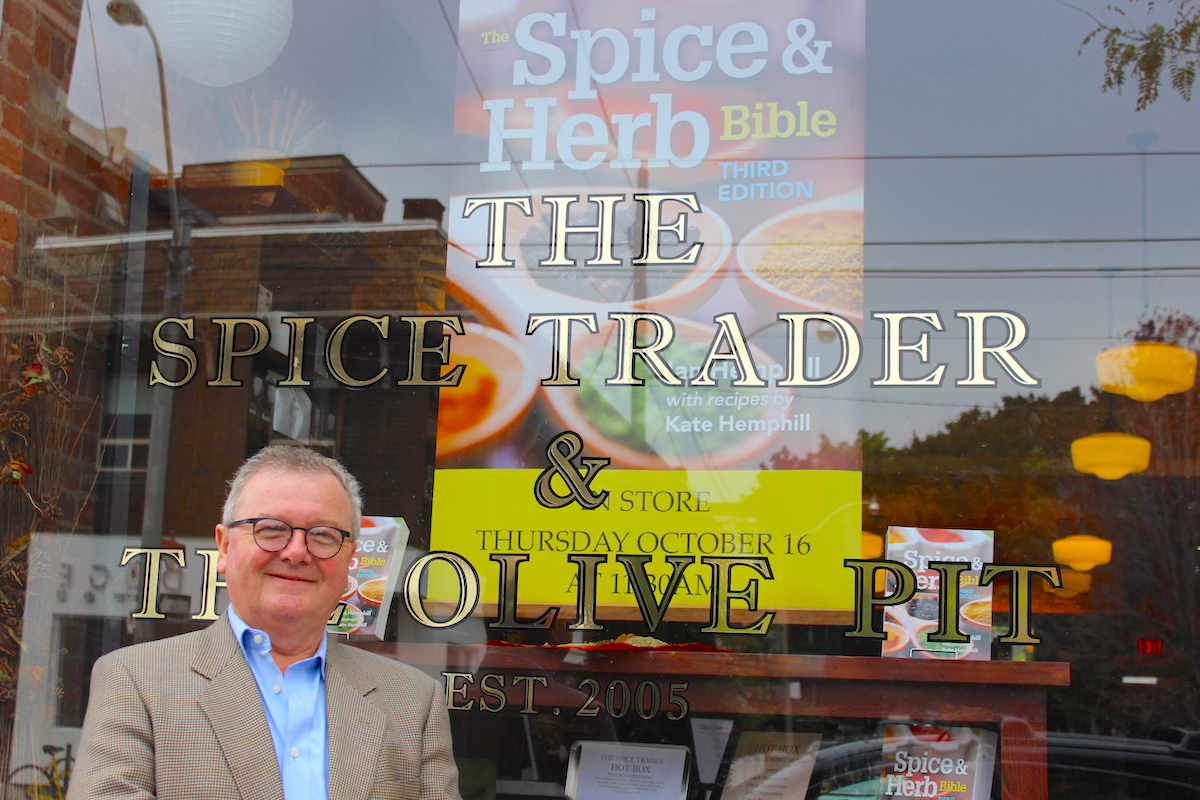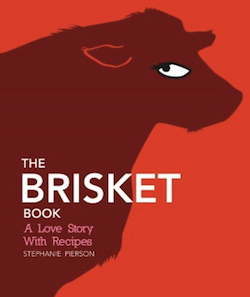Ricardo Larivée says slower is better in his new cookbook.
There is an amusing infographic at the back of Ricardo Larrivée’s new slow cooker cookbook Slower Is Better. It’s a compilation of slow cooker statistics drawn from the author, broadcaster and magazine publisher’s test kitchen in Montreal. It displays information such as the litres of broth poured during recipe development and testing (106), and the number of slow cookers team Ricardo had running 24 hours a day while they created the book (12). The biggest number displayed is the number of copies sold of Ricardo’s first slow cooker cookbook, 2013’s Slow Cooker Favourites : 160,000.
I met with Ricardo last week at the St. Lawrence Market, as he was in Toronto to promote the new book. He sat for the interview below and explained why he wanted to follow the success of Slow Cooker Favourites with another slow cooker cookbook, and why Slower Is Better is different from its predecessor.
This interview has been edited for length, clarity and style.
Good Food Revolution: Another slow cooker cookbook?
Ricardo Larrivée: Ha ha! Yes, and you wonder why right?
GFR: Well, I kind of know why because I know your first slow cooker cookbook was a bestseller.
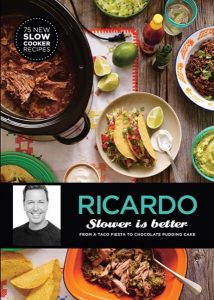 RL: We sold over 150,000 copies, so we were very happy. But for Slower is Better, we wanted to do what we couldn’t do in the first one. We had too many recipes to put in. And we also wanted to start where we left. We realized that it was easy to entertain and make big parties with a slow cooker, which is why in this book there’s lots of themed recipes like doing a big brunch at home, throwing a big taco party or hosting an Indian feast. I wanted to touch many eyes of cultural influences in food. Slow cooking is really open to the world. This is what people will find in this book. There’s even vegetarian food. So I wanted a book that would please everyone coast to coast, really.
RL: We sold over 150,000 copies, so we were very happy. But for Slower is Better, we wanted to do what we couldn’t do in the first one. We had too many recipes to put in. And we also wanted to start where we left. We realized that it was easy to entertain and make big parties with a slow cooker, which is why in this book there’s lots of themed recipes like doing a big brunch at home, throwing a big taco party or hosting an Indian feast. I wanted to touch many eyes of cultural influences in food. Slow cooking is really open to the world. This is what people will find in this book. There’s even vegetarian food. So I wanted a book that would please everyone coast to coast, really.
MJ: I guess every culture has some tradition of slow cooking?
RL: You’re right. It’s everywhere. But you can also use the slow cooker as a tool. You can say it’s great because you can start cooking in the morning and your dish will cook for six or eight hours and your dinner will be ready for you when you get home. But the slow cooker is also a great steamer. You know, there’s not much you can do with a microwave, but a slow cooker is like a steam bath. This is why the crème brûlée, cream cheese and pudding recipes are so good. It’s a steam bath and it’s very even. It cooks very well with coil around it, not underneath it so it doesn’t burn. I realized that, when people cook, one of their big stresses is the actual cooking part. They are scared that it’s either going to be overcooked or undercooked. That problem doesn’t exist with a slow cooker. It relieves a lot of stress. I would say my whole company is based on giving people a sense of pride and work on their self-esteem and say, “of course you can do it!” How many hours do you give to your boss every day? Give yourself half an hour or an hour and it will be great. Just don’t try and be a restaurant. There lots of great restaurants everywhere. We don’t need to try and play restaurant.
MJ: Good advice. I remember when I first interviewed you many, many years ago you said something a lot like that. You said something like that for Saturday night people expect to become Michelin starred chefs for their dinner parties without having trained and cooked for hours a day every day.
RL: Yes. How is that possible? It’s not possible. People put a lot of pressure on themselves. A lot. Why? Do you really think people are coming to your house and like you because of your food? If they like you only because of your food, maybe you should change friends.
MJ: Or start charging them to eat!
RL: [Laughs.] Right! Anyway, the book is trying to get that message out.
MJ: What’s the weirdest thing in the book?
RL: The weirdest thing? Hmm… I think that a frittata or an omelette is not something people will expect in a slow cooker cookbook. But you see, for these two recipes I don’t use the slow cooker to simmer for six or eight hours. I use it for four hours at low temperature because I think the way it cooks with the steam gives a plus to the dish. If I do something just to make a recipe, what’s the point? I f I do it with a slow cooker, we need a real reason, something that is going to be a plus for taste, or time, or health. I need a plus somewhere.
MJ: So, how do you and your team come up with and create these recipes?
RL: Ah well, we try many things and go in all sorts of directions. We try and separated it by the sections of the book: ok, we need soups, we need hot dishes and cold dishes, we need vegetarian recipes, and we need beef recipes and so on. It’s Cartesian, you make a grid and then you say, what do we feel making today? Let’s go for a pudding!
MJ: Everybody likes a pudding.
RL: It’s funny because at the end we realized that the last chapter of the book, the desserts, is very 1970’s and 80’s. There’s upside-down pineapple cake, bread pudding… things that our parents were doing. We try and give it a twist, but at the same time I like it when I give a wink to nostalgia.
MJ: And they’re good food. Things come back into fashion, there’s a kind of circle.
RL: But at the same time, we work very hard to make sure there is colour and texture. We don’t want something mushy and brown. We want variety. And the big difference between the books made 30 years ago and mine is the flavour. We are much more into spices and herbs now. And deglazing. I am thinking of my Marsala-Braised Short Ribs. It’s a restaurant recipe, really, but anyone can do it. It’s impossible to miss it. Impossible. I can’t give people miracles, but I can assure them of a fool-proof recipe.
MJ: So you have really been converted into a slow cooker, eh?
RL: I have. I mean my life is not nuts about a slow cooker, and the next book is not going to be about slow cooking. But it will have a chapter for slow cooking, and it will be a very important chapter. Slow cooker cooking has proven to me that in a week of seven days it can save at least one meal. Maybe two. You cook more, so you have leftovers. There’s a pork shoulder roast in Slower is Better with fingerling potatoes, dates and shallots, which is a beautiful Sunday dinner. But there’s a lot of meat. So you can make a fantastic grilled cheese with it the next day. And Like I said, you don’t need to be a restaurant. If you’re a family and you’re good at doing ten or twelve recipes, that’s all you need and you go from there.
MJ: And if they’re good, then you want to eat them again, anyway.
RL: And you can always add a little thing, or do a twist, to your basic recipes. But if you want to create a tradition, you need to repeat them. If like this grilled cheese, and you make it once a month or something, eventually your kids are going to start asking for it.
Find out more about Slower Is Better and Ricardo at his website, ricardocuisine.com

